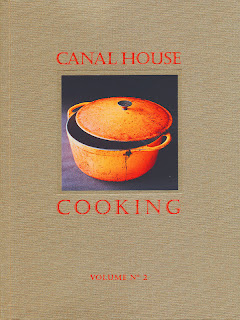I had a blast reading RESTAURANT
MAN (Viking; $27.95), Joe Bastianich’s raucous, deeply personal and entertaining
memoir of growing up in the family business.
The son of successful restaurateurs, Lidia and Felice Bastianich, young
Joe grew up as an entitled punk in Queens, New York. While his parents were
running their first restaurant in Queens, and later as Lidia launched her own
fabled restaurant and publishing success in Manhattan, young Joe was avoiding
the family business, eventually going to college and landing a job on Wall
Street. Unhappy in the world of investment banking, went to Italy instead and
learned about food and especially Italian wine. It was Italian wine in
particular (he owns his own vineyards in Italy, where he makes excellent
wines) that drew Joe back to the family business. When he returned to New
York, Joe was ready to open his own restaurant. Becco, was his first venture,
and in partnership with his mother, Becco became a success, a great deal of that success was the Becco wine list, with all of the very drinkable wines priced at an affordable $15 a bottle. Bastianich would innovate the concept of wines in his restaurants for the rest of his career. In a few short
years, Joe and Mario Batali, then a hot young chef with his own restaurant and
a TV show on the Food Network, teamed up to create Babbo, their brilliantly successful
Greenwich Village modern Italian restaurant. It would be the start of a
fabulous partnership with a string of legendary restaurants in New York City,
Las Vegas, Los Angeles, and Eataly, a multi-million-dollar Italian culinary
retail and restaurant enterprise in the heart of Manhattan.
RESTAURANT MAN has often been compared to Anthony Bourdain’s
Kitchen Confidential, and the similarities
are apt. Joe curses and struts up a storm like a sweaty stevedore but above all he is very funny. Some have been put off by the crude language, the confidence, swagger and style he employs to tell his story. The restaurant business is a rough and tumble world and Joe gives it all the color it deserves. He captures all the magic, hard work and the headaches that go with
running an incredibly detailed restaurant empire with a portfolio of
multi-starred, critically acclaimed businesses that are the envy of the
restaurant world. Joe also settles scores with grandstanding food critics,
greedy landlords, and business associations that went bad. He’s been criticized
for his salty language and the score settling he indulges in this book. More power to him. We have all worked with
people we didn’t like or found to be dishonest, or worse, mean-spirited. Getting
even always feels good, or as I like to say, "Schadenfreude, baby!" Joe Bastianich is not above giving as good as he gets.
I had a few quibbles. Joe claims it was Babbo that started
the popularity of eating at the bar in restaurants in Manhattan. Danny Meyer’s
Union Square Café was serving regulars with style, great food and wine years
before Babbo opened. I’m still not sure why Joe decided to share his Bill
Clinton story, which I felt was a tad bit petty, rather than illuminating.
Those are minor stumbles in a remarkable success story in the cutthroat world. Joe is incredibly generous in
laying out his own formula for success from finding a location, creating the vision
for the kind of restaurants that Batali and he innovated, hiring the teams of
designers and contractors that created their vision, as well as the chefs,
kitchen and front-of-house waiters, busboys and managers who helped keep his restaurants humming day in and day out. He’s very detailed about the sort of pitfalls to be aware
of and to avoid. RESTAURANT MAN is a true, first-generation story of a young
man formed from his parent’s immigrant experience, and their success in the new
world. Joe Bastianich is articulate and respectful about his parents
hard work, and his own rejection and embracement of their traditions as he
created his own path. One of the best truisms from Bastianich is his belief that male chefs cook competitively and females cook to nurture--a truly wise statement. He acknowledges both his mother and his father’s own unique
contributions to his success. And in true Bourdain style, Joe keeps you turning
the pages.
By the way, I always liked Babbo, and all the other Bastianich/Batali restaurants in New York, but Del Posto has provided me with perhaps the best restaurant experiences of my life and I dined in New York City's best and most acclaimed restaurants for nearly four decades.
By the way, I always liked Babbo, and all the other Bastianich/Batali restaurants in New York, but Del Posto has provided me with perhaps the best restaurant experiences of my life and I dined in New York City's best and most acclaimed restaurants for nearly four decades.



















